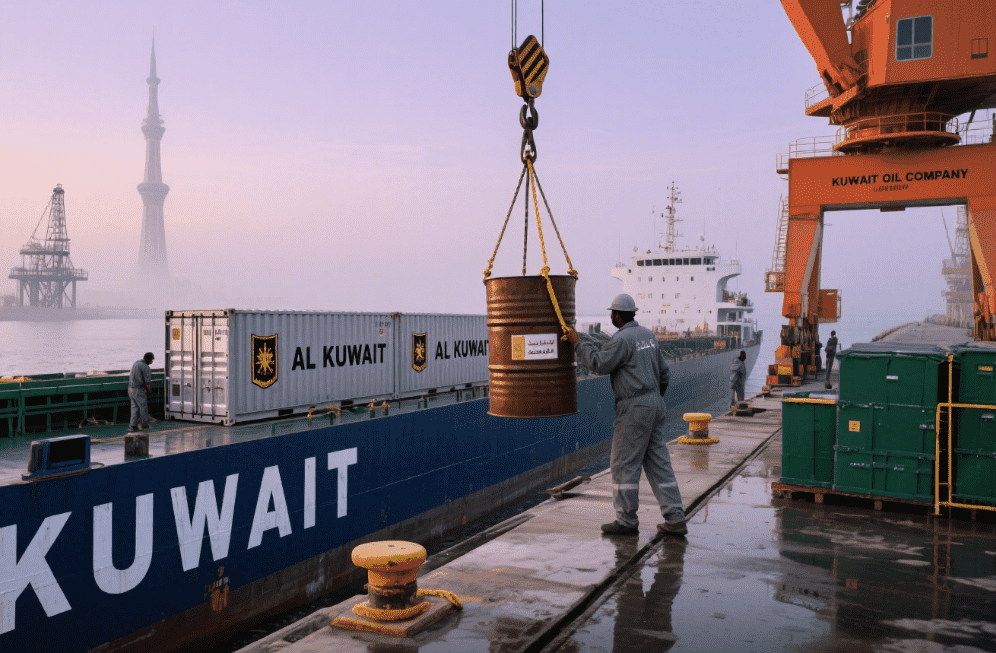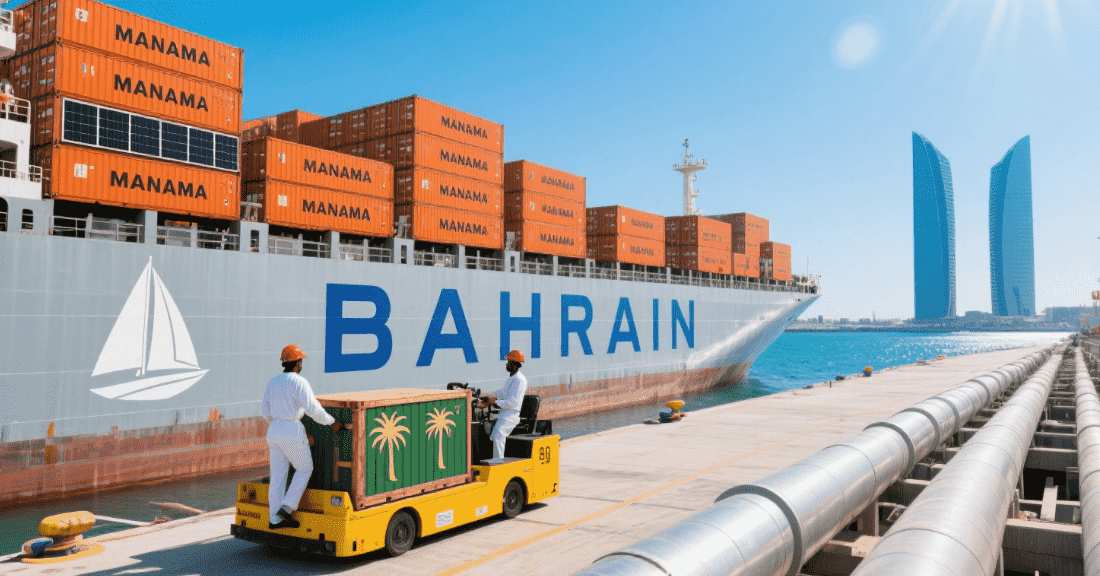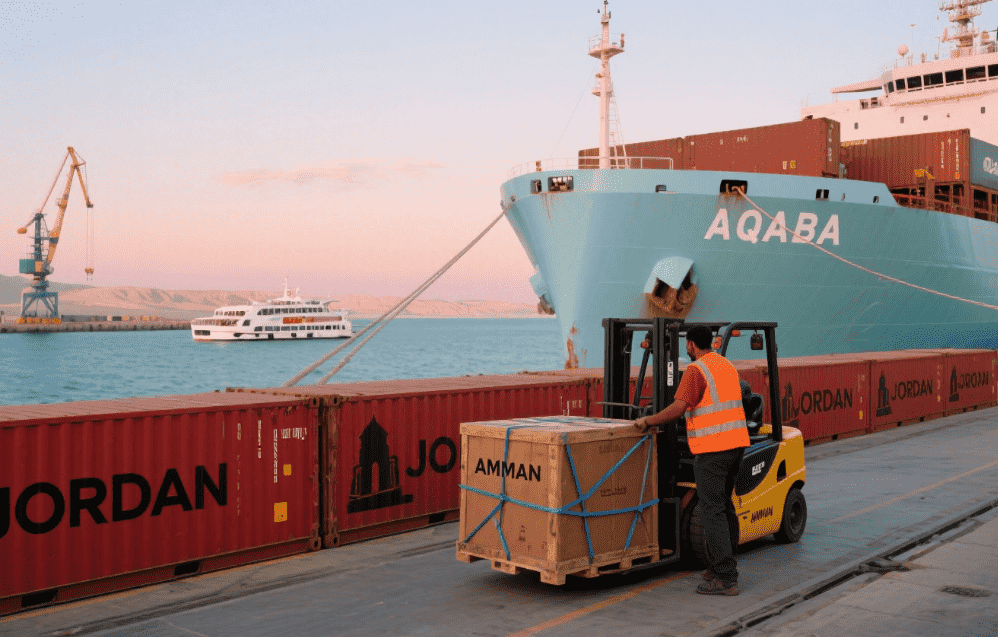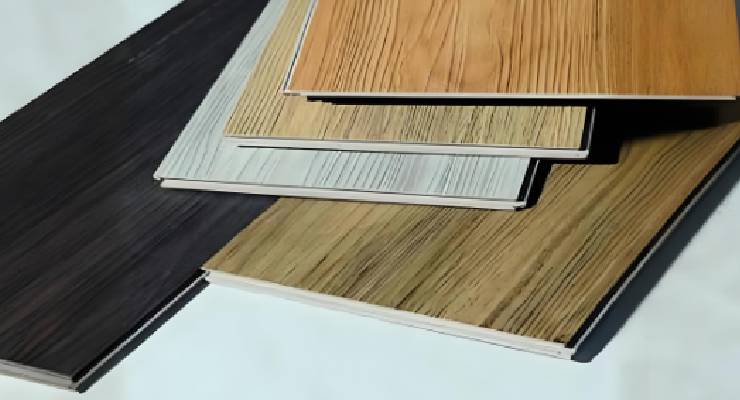
With the continuous development of the economy and the country’s rising urbanization rate, PVC flooring has gained popularity due to its convenient installation, environmental benefits, and durability. Importing and transporting PVC flooring from China is a cost-effective choice, but the process involves several crucial steps. This guide will help you understand the basics and streamline your import.
What is PVC Flooring?
PVC flooring is a modern flooring material made from polyvinyl chloride (PVC) resin and various auxiliary materials. It is typically produced through processes like coating, calendering, and extrusion. PVC flooring usually consists of multiple layers, including a wear-resistant surface, a decorative printing layer, and a substrate layer.
Types and Application Scenarios of PVC Flooring
Homogeneous Permeable PVC Flooring
This type of flooring maintains consistent color and pattern from top to bottom, making wear less visible. It is ideal for high-traffic areas like hospitals, shopping malls, and schools. If you’re considering bulk PVC flooring shipping from China to the USA, this type is often favored for commercial and institutional use due to its durability.
Composite PVC Flooring
Composite PVC flooring features multiple layers, including a wear-resistant PVC layer, an intermediate layer (glass fiber or foam), and a PVC substrate. It’s more elastic and comfortable, making it suitable for offices, libraries, and commercial spaces. Cost-effective PVC floor import from Chinese manufacturers is an excellent option if you need this type of flooring in large volumes.
Semi-Elastic PVC Flooring
Combining flexibility and rigidity, semi-elastic PVC flooring offers excellent wear resistance and anti-slip properties. This makes it ideal for schools, kindergartens, and gyms. When importing, you can choose between sea freight options for large PVC flooring orders from China or air cargo solutions for urgent PVC flooring samples from China based on your project’s timeline.
Differences Between PVC Flooring and Other Flooring Types
PVC Flooring: Known for its waterproof and wear-resistant qualities, PVC flooring is easy to install and lightweight. Available in various colors and textures, it provides a sound insulation effect and is comfortable underfoot. For logistics, it can be shipped efficiently through pallet vs. container shipping for PVC flooring from Chinese factories, depending on your order size.
Wooden Flooring: Requires regular maintenance, including waxing and moisture prevention. While it offers thermal insulation and comfort, it’s more complex to install and doesn’t perform as well as PVC flooring in sound insulation.
Tile and Stone Flooring: Though durable, tile and stone flooring require more complicated installation and frequent cleaning. Additionally, they are harder and colder underfoot, which can reduce comfort and sound insulation. If you’re looking to ship in bulk, container shipping rates for PVC flooring from China are typically more cost-effective than shipping heavier flooring materials like stone or tile.
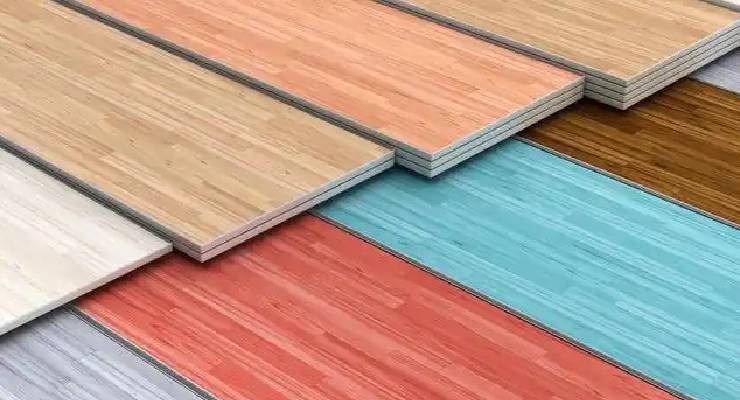
Why Import PVC Flooring from China?
Chinese suppliers offer a wide variety of PVC flooring designs and types to meet the diverse needs of international markets. Whether for homogeneous permeable flooring, composite flooring, or semi-elastic flooring, China provides a comprehensive range of products to suit both residential and commercial needs. Additionally, China’s PVC flooring manufacturers adhere to strict ISO and CE certifications, ensuring that the products meet global quality standards.
When importing, it’s also crucial to understand the customs clearance process for PVC flooring, as well as the logistics of door-to-door delivery from Chinese suppliers. Partnering with freight forwarders specializing in PVC flooring will make the process smoother, ensuring timely and hassle-free imports.
1. Wide Range of PVC Flooring Options
China’s PVC flooring industry offers a diverse selection to cater to various applications:
Homogeneous permeable flooring for high-traffic areas like hospitals and schools.
Composite PVC flooring for offices and commercial spaces seeking comfort and durability.
Semi-elastic PVC flooring for areas requiring both flexibility and safety, such as gyms and kindergartens.
Whether you need flooring for commercial, residential, or industrial projects, Chinese manufacturers provide extensive customization options to meet specific requirements.
2. Competitive Prices
China is renowned for its cost-effective manufacturing, which is largely due to:
Lower labor costs.
Economies of scale in production.
Advanced manufacturing technologies and automation.
This allows Chinese manufacturers to offer high-quality PVC flooring at competitive prices, making it an attractive option for global buyers looking to maximize their budget without compromising on quality.
3. Efficient Shipping Networks
Chinese PVC flooring manufacturers have established efficient shipping networks, often supported by partnerships with reliable freight forwarders. These forwarders handle everything from customs clearance to logistics management, ensuring that your PVC flooring is delivered on time and with minimal delays. With options like sea freight for bulk orders and air freight for urgent shipments, Chinese suppliers can adapt to your shipping needs.
4. Customization Capabilities
Chinese suppliers are known for their flexibility in offering customized solutions. Whether you need specific sizes, patterns, or features, Chinese manufacturers can tailor their PVC flooring products according to your exact specifications. This makes China an ideal sourcing destination for businesses seeking unique solutions for their commercial or residential projects.
5. Bulk Order Capacity
Chinese suppliers are capable of handling large volume orders efficiently, making them ideal for wholesalers, distributors, and large-scale commercial projects. With well-established production facilities, Chinese manufacturers ensure timely deliveries even for bulk shipments. This means you can confidently place large orders for commercial spaces or infrastructure projects without worrying about delays or supply chain issues.
How to Import PVC Flooring from China: A Step-by-Step Guide
Importing PVC flooring from China can be a highly profitable decision for your business, but it requires careful planning and execution to ensure smooth transactions and timely deliveries. Follow these steps to successfully import PVC flooring from China:
1. Search for Reliable PVC Flooring Suppliers
One of the most critical steps in importing PVC flooring is finding dependable suppliers in China. Here are several methods to locate trusted manufacturers:
Search Online
Many Chinese manufacturers offer their products online through directories and platforms that connect international buyers with suppliers.
Google Research
A Google search can help you find top Chinese manufacturers. It’s a great tool to locate reliable suppliers, especially if you want to purchase PVC flooring from external sources.
China B2B Trade Websites
Alibaba, Made-in-China, and Global Sources are popular B2B platforms where you can search for PVC flooring manufacturers and compare products, prices, and company profiles.
Social Media
Platforms like Facebook, Twitter, and LinkedIn have numerous PVC flooring suppliers. You can contact potential manufacturers, ask questions, and explore their offerings via these channels.
Attend China Trade Exhibitions
Attending trade fairs in China is a great way to meet suppliers in person and inspect their products. Some of the most popular exhibitions include:
Canton Fair: One of China’s largest trade fairs, showcasing a wide range of products, including flooring.
Domotex Asia/Chinafloor: A premier flooring exhibition held in Shanghai, specializing in all types of flooring, including PVC.
China International Coverings Expo: A specialized trade fair for flooring and wall covering materials, where you can find suppliers of high-quality PVC flooring.
2. Evaluate Supplier Quality
Once you have a list of potential suppliers, it’s important to evaluate their reliability and product quality. Here’s what to look for:
Company Business License
Ensure the supplier has a valid business license, which proves they are legally registered and compliant with local regulations
Quality Control System
Ask about their quality control system to ensure their products meet your specifications and quality standards. Consistent quality control is key to avoiding defects.
PVC Flooring Certifications
Certifications are crucial for ensuring that PVC flooring meets safety, environmental, and performance standards. Look for certifications like:
ISO 9001: Quality management system certification.
CE: European Conformity for safety.
FloorScore: Certification for indoor air quality.
REACH: Ensures compliance with European Union chemical regulations.
RoHS: Restriction of Hazardous Substances, especially important for eco-friendly flooring.
Production Capacity
Make sure the supplier has the production capacity to fulfill your orders on time. A higher capacity often indicates a more experienced and stable supplier. Ask for details on their monthly production output and lead times for bulk orders.
3. Compare Quotations from Different Manufacturers
After evaluating suppliers, request quotations and compare them carefully to get the best deal. Here’s what to consider:
Trade Terms (Incoterms)
Understand the Incoterms (International Commercial Terms) used in the quotation. These define the responsibilities of the buyer and seller during the shipping process. Common terms include:
FOB (Free on Board): The seller delivers goods to the port, and the buyer handles shipping.
CIF (Cost, Insurance, and Freight): The seller covers the cost of shipping and insurance until the goods reach the destination port.
Product Specifications
Ensure the product specifications in each quotation match your requirements. Compare details like material composition, thickness, wear layer, and certifications to ensure you’re getting the same quality across suppliers.
Warranty Period
Check the warranty policy. A longer warranty period can give you peace of mind, especially if you receive defective products. Many suppliers offer warranties ranging from 5 to 15 years, depending on the type of PVC flooring.
Payment Terms
Compare the payment terms offered by each supplier. Some may require a deposit, while others offer flexible payment options. Ensure the terms align with your financial and logistical needs. Common payment methods include:
T/T (Telegraphic Transfer): Typically requires a 30% deposit and the remaining 70% upon shipment.
Letter of Credit (L/C): Provides a secure payment method, especially for large orders.
4. Arrange Shipping and Logistics
Once you’ve selected a supplier and confirmed your order, it’s time to arrange shipping. Here are the key steps:
Select a Shipping Method
Depending on the size of your order and urgency, you can choose between:
Sea Freight: The most cost-effective option for large orders.
Air Freight: Suitable for smaller, urgent shipments, but more expensive.
LCL (Less than Container Load): If your order doesn’t fill an entire container, LCL allows you to share space with other shipments.
FCL (Full Container Load): Ideal for bulk orders that fill an entire 20ft or 40ft container.
Work with a Freight Forwarder
Hiring a freight forwarder specializing in PVC flooring can simplify the shipping process. They handle:
Customs clearance process for PVC flooring imports.
Door-to-door delivery from Chinese suppliers.
Optimizing shipping routes to reduce costs.
Calculate Shipping Costs
Understanding how to calculate shipping costs for your PVC flooring order is crucial. Factors affecting costs include:
Container size (20ft or 40ft).
Weight and volume of the shipment.
Destination port and customs duties.
5. Perform Quality Control and Inspection
Before shipping, it’s essential to inspect the quality of your PVC flooring to avoid receiving defective goods. You can:
Hire a third-party quality control inspection service.
Request product samples before mass production.
Ensure the packaging is secure to prevent damage during transit.
6. Handle Customs Clearance
When your shipment arrives at the destination port, you’ll need to clear customs. Ensure all necessary documentation is in order, including:
Bill of Lading.
Commercial Invoice.
Packing List.
Certificates of Origin (if applicable).
Working with an experienced freight forwarder will help streamline the customs clearance process, ensuring timely delivery. Also can refer to all our guide Mastering Importing from China: Step-by-Step Guide from A to Z
How to Ship PVC Flooring from China: A Complete Guide
1. Choose the Right Shipping Method
Selecting the appropriate shipping method depends on several factors, including the size, weight, urgency, and budget for your PVC flooring shipment. Below are the most common shipping options when importing PVC flooring from China:
a. Air Freight
Best for: Small, urgent orders.
Transit Time: 1-5 days (e.g., China to USA: 3-5 days, China to Europe: 2-4 days).
Cost: High, but offers the fastest delivery.
When to Choose: If you need quick delivery and the shipment volume is relatively small. Air freight is ideal for time-sensitive shipments or when you have limited storage space. It’s also a great solution for urgent PVC flooring samples.
b. Sea Freight
Best for: Large, heavy shipments.
Transit Time: 20-40 days (e.g., China to USA West Coast: 20-30 days, China to USA East Coast: 30-40 days, China to Europe: 25-35 days).
Cost: More economical for bulk orders.
When to Choose: If you’re shipping PVC flooring in bulk and can plan ahead, sea freight is the most cost-effective option. It’s suitable for businesses with larger storage facilities or those that can accommodate longer lead times.
For large orders, bulk PVC flooring shipping via container shipping is ideal.If you want to know more, you can contact Winsail Logistics at any time
c. Express Shipping
Best for: Small, urgent orders.
Transit Time: 2-7 days.
Cost: Higher than air freight but includes door-to-door service.
When to Choose: If you need door-to-door delivery for smaller shipments, courier services like DHL, FedEx, or UPS offer fast and reliable solutions. It’s ideal for urgent orders or samples when time is of the essence.
d. Rail Freight
Best for: Shipments to Europe.
Transit Time: 15-20 days (e.g., China to Germany or France: 15-18 days).
Cost: Lower than air freight, but faster than sea freight.
When to Choose: If you’re importing PVC flooring to Europe, rail freight is a middle-ground option offering faster transit than sea and lower costs than air. It’s becoming an increasingly popular option for shipments to European markets via the China-Europe Railway.
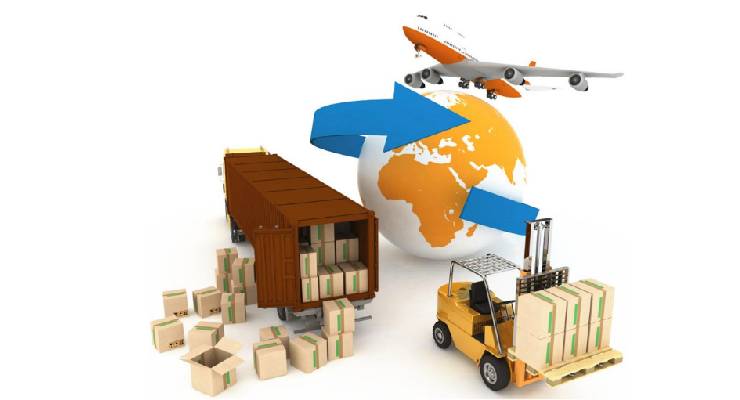
2. Arrange Transportation and Insurance
Once you’ve chosen the shipping method, the next step is to arrange transportation and insurance with your supplier or freight forwarder. Here’s how to proceed:
Negotiate with Suppliers
It’s important to negotiate shipping costs with your Chinese exporters. Discuss the terms and conditions of shipping, including packaging, transit time, and any additional services. Many Chinese manufacturers are open to negotiation, which can help you secure a cost-effective PVC floor import.
Insurance
Ensure your goods are insured during transit. This is especially important for large, high-value shipments of PVC flooring to protect against potential losses or damages. Discuss insurance terms with your freight forwarder or supplier to ensure comprehensive coverage for your shipment.
Freight Forwarder
Work with a reliable freight forwarder who specializes in PVC flooring shipments. A good freight forwarder will handle all logistics, including:
Customs clearance.
Transportation.
Final delivery at your destination.
By partnering with an experienced freight forwarder specializing in PVC flooring, you can ensure that your shipment is managed professionally and efficiently. Refer this guide about How to Choose the Right Freight Forwarder in China.
3. Quality Control Inspection
Before shipping, it’s crucial to conduct a quality control inspection for your PVC flooring. This ensures that your products meet your specifications and are free from defects.
Third-party inspections: You can hire an independent inspection company in China to verify the quality before the products are shipped. This helps avoid problems upon delivery.
Request samples: Before placing a bulk order, request samples from your supplier to ensure the quality meets your expectations.
Factory audits: Some importers opt to audit the factory where the PVC flooring is manufactured to ensure that their supplier follows proper quality control procedures.
4. Pallet vs. Container Shipping
When importing PVC flooring, you may have to decide between pallet shipping and container shipping based on your order size.
Pallet shipping: Ideal for smaller shipments, where goods are stacked on pallets. This is often used in LCL (Less than Container Load) shipments, where you share container space with other goods.
Container shipping: Recommended for FCL (Full Container Load), where you ship a full 20ft or 40ft container. This is the more cost-effective option for bulk orders and is suitable for larger shipments of PVC flooring.
5. Handling and Storage Requirements
Proper handling and storage are critical during international shipping to ensure that your PVC flooring arrives in good condition. Here are some key points:
Packaging: Ensure that the PVC flooring is properly packaged to prevent damage during transit. Pallets should be shrink-wrapped or banded to keep the items secure.
Humidity and Temperature Control: PVC flooring is sensitive to temperature and humidity changes. Make sure your freight forwarder is aware of the storage requirements during transit, especially for sea or rail freight shipments that may face varying weather conditions.
Loading and Unloading: If you’re shipping via containers, ensure that the freight forwarder uses proper loading and unloading equipment to avoid damage to the flooring materials.
6. Track Your Shipment
Most freight forwarders and express couriers offer real-time tracking systems. By using these tracking tools, you can monitor the status of your PVC flooring shipment throughout its journey. Ensure your freight forwarder provides you with a tracking number and regular updates on your shipment’s status. Real-time tracking allows you to stay informed about any delays or changes in the shipping schedule.
7. Customs Clearance and Delivery
Upon arrival at the destination country, the goods will go through customs clearance. Here’s a quick rundown of the process:
Customs Documentation
Ensure that all necessary documents are provided for customs clearance. These documents typically include:
Commercial Invoice.
Packing List.
Bill of Lading.
Certificates of Origin (if required).
Accurate documentation helps avoid delays during the customs clearance process.
Duties and Taxes
Be prepared to pay any applicable import duties and taxes based on the destination country’s regulations. Understanding the HS Code for PVC flooring (usually 3918.10) can help you estimate the duties and taxes in advance.
Final Delivery
Once cleared through customs, the goods will be delivered to your warehouse or the specified address. Freight forwarders often offer door-to-door delivery, simplifying the process for you. This option is particularly useful when you want to minimize the logistical burden on your end.
Shipping Methods for PVC Flooring from China
To summarize, below are the best shipping methods for PVC flooring from China, based on your specific needs:
Shipping Method | Best For | Transit Time | Cost | When to Choose |
Small,urgent orders | 1-5 days | High | When you need fast delivery and have small shipments. | |
Large,heavy shipments | 20-40 days | Low | For bulk shipments where cost is more important than speed. | |
Express Shipping | Small, urgent orders | 2-7 days | High | Ideal for door-to-door delivery of small, time-sensitive shipments. |
Rail Freight | Shipments to Europe | 15-20 days | Moderate | Perfect for shipping to Europe when you need a balance between speed and cost. |
Choosing the Right Freight Forwarder
Selecting the right freight forwarder is crucial to ensure your PVC flooring shipment is handled professionally and arrives on time. When choosing a freight forwarding company, consider the following factors:
1. Experience
Choose a company with experience in handling PVC flooring shipments and customs clearance. An experienced freight forwarder will be familiar with the specific requirements for shipping flooring materials and can help you avoid potential delays or issues.
2. Service Quality
Look for a freight forwarder that offers end-to-end services, including:
Door-to-door pickup.
Customs clearance.
Final delivery at your destination.
Full-service freight forwarders can manage the entire shipping process, making it more convenient for you.
3. Price
Compare quotes from different freight forwarders to ensure you’re receiving competitive pricing. While cost is important, make sure it’s balanced with service quality to avoid unexpected fees or poor service.
4. Tracking
Ensure the freight forwarder offers real-time tracking and customer support throughout the shipping process. Being able to monitor your shipment and receive updates will give you peace of mind and help you manage your supply chain effectively.
Winsail is a freight forwarder with a proven track record of efficiently shipping cans .If you have goods to go from China, you can contact Winsail Logistics at any time. Our company has also produced pvc goods, click the link below, you can learn about it:
Ocean freight service PVC STABLIZER from China to
Ocean freight service PVC CONTAINMENT BOOM from China
Ocean LCL freight service PVC LEATHER from CHINA
Air freight PVC FLOOR MAT from PVG to JED


